Abstract
We measured the response to breathing a mixture of 80% helium and 20% oxygen (He) during a maximum expiratory flow-volume (MEFV) maneuver in 66 nonsmokers and 48 smokers, aged 17-67. All of the subjects studied had (forced expiratory volume in 1 s/forced vital capacity [FEV1.0/FVC]) × 100 of greater than 70%. While the flow rates of the smokers were within ±2 SD of those of the nonsmokers at 50% VC (V̇max50), both groups showed a reduction in flow with age (nonsmokers: r=-0.34, P<0.01; smokers r=-0.52, P<0.001). Nonsmokers showed no significant reduction with age in response to breathing He, while smokers showed a marked reduction with age (r=-0.63, P<0.001 at V̇max50). We also measured the lung volume at which maximum expiratory flow (V̇max) while the subject was breathing He became equal to V̇max while he was breathing air, and expressed it as a percent of the VC. This was the most sensitive method of separating smokers from nonsmokers. These results indicate that the use of He during an MEFV maneuver affords sufficient sensitivity to enable detection of functional abnormalities in smokers at a stage when V̇max while they are breathing air is normal.
Full text
PDF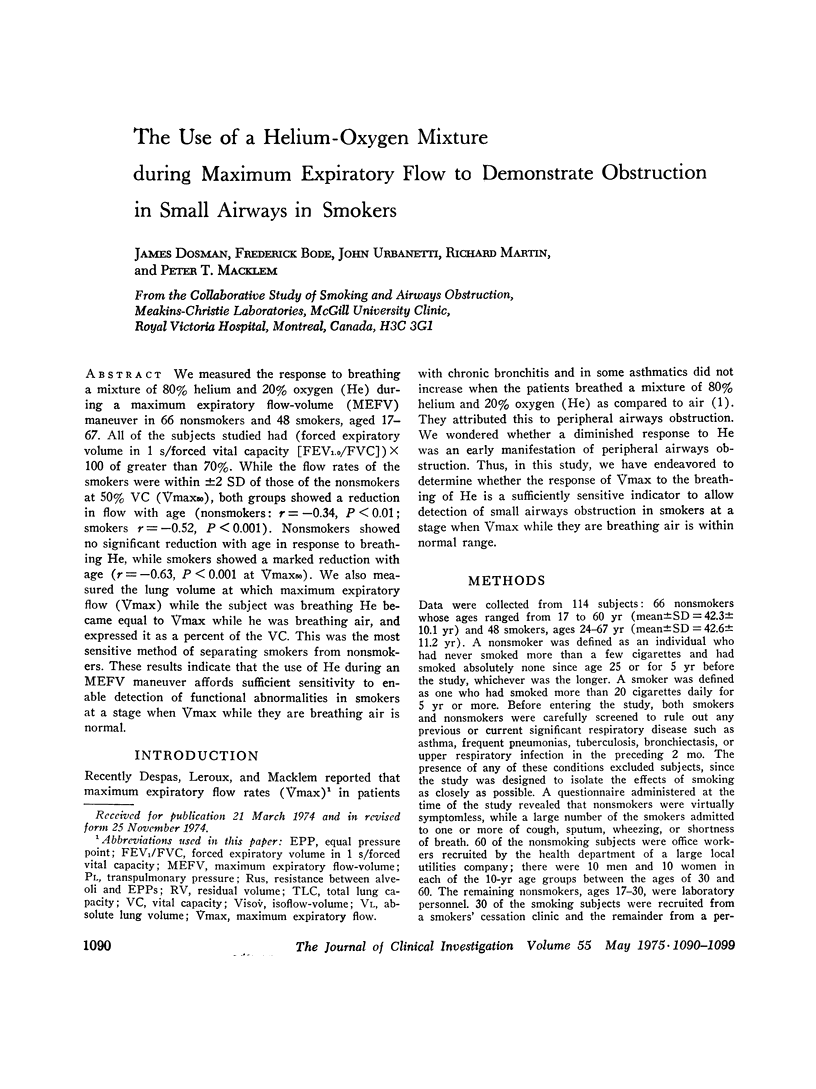
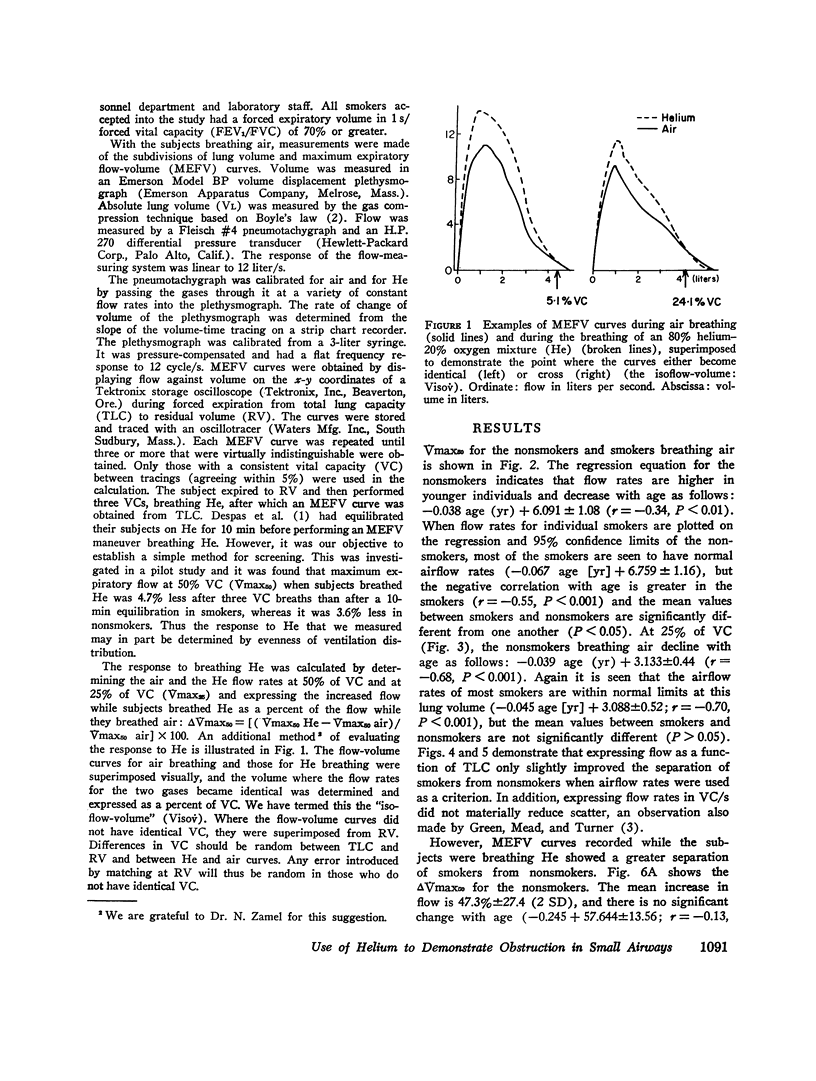
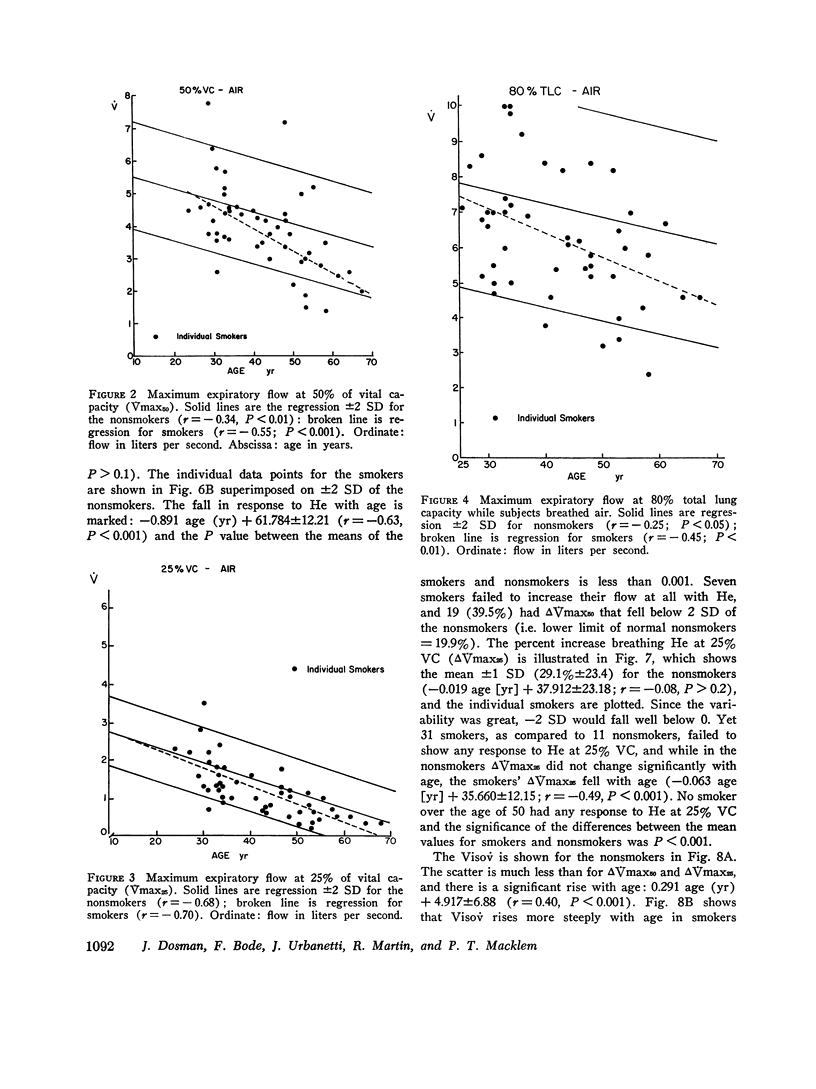
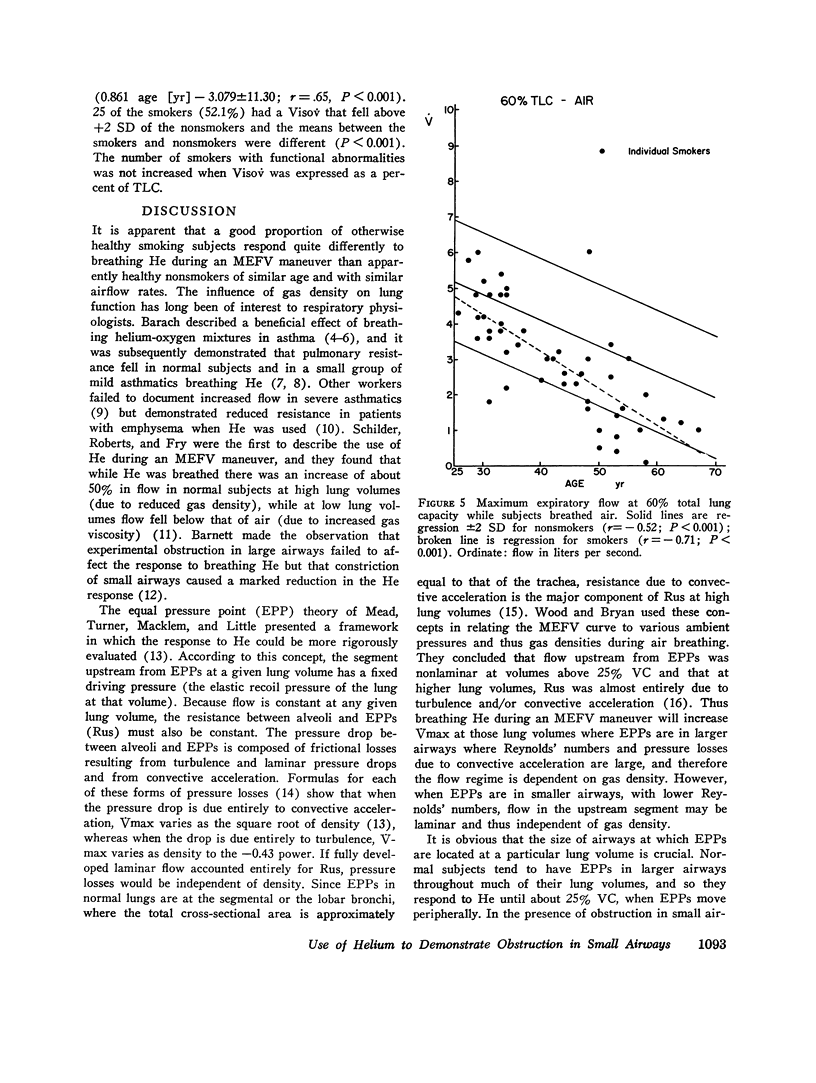
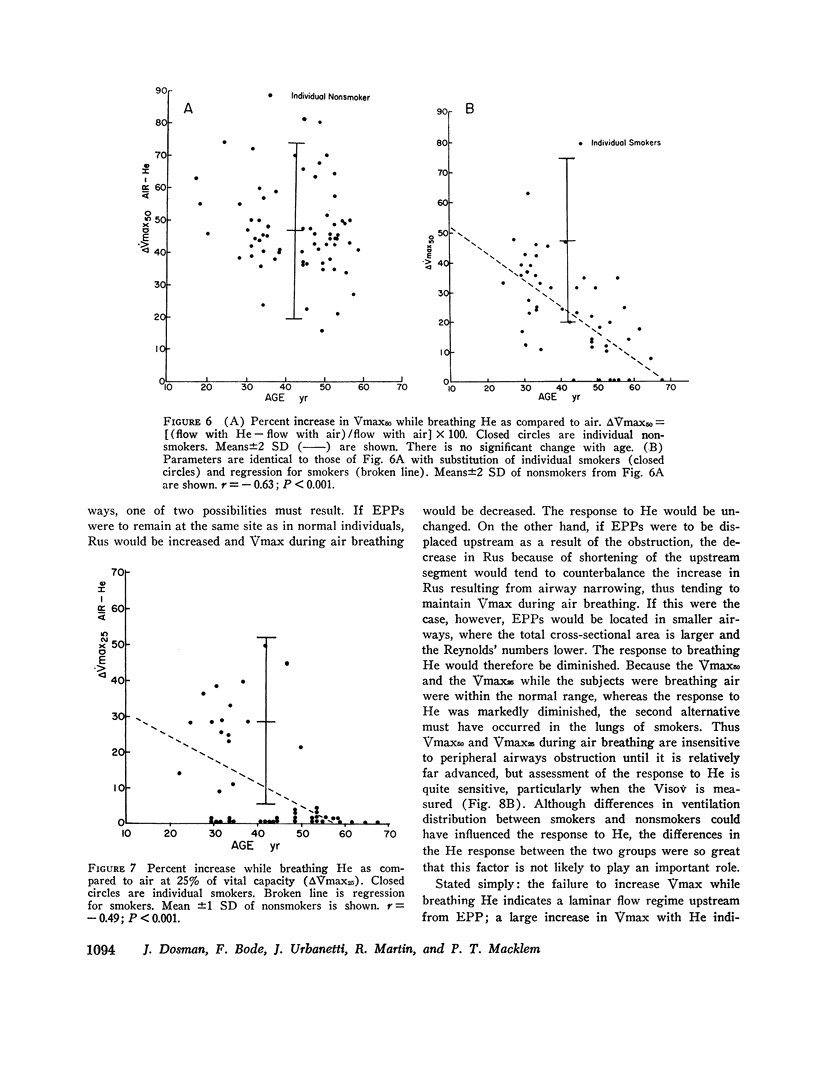
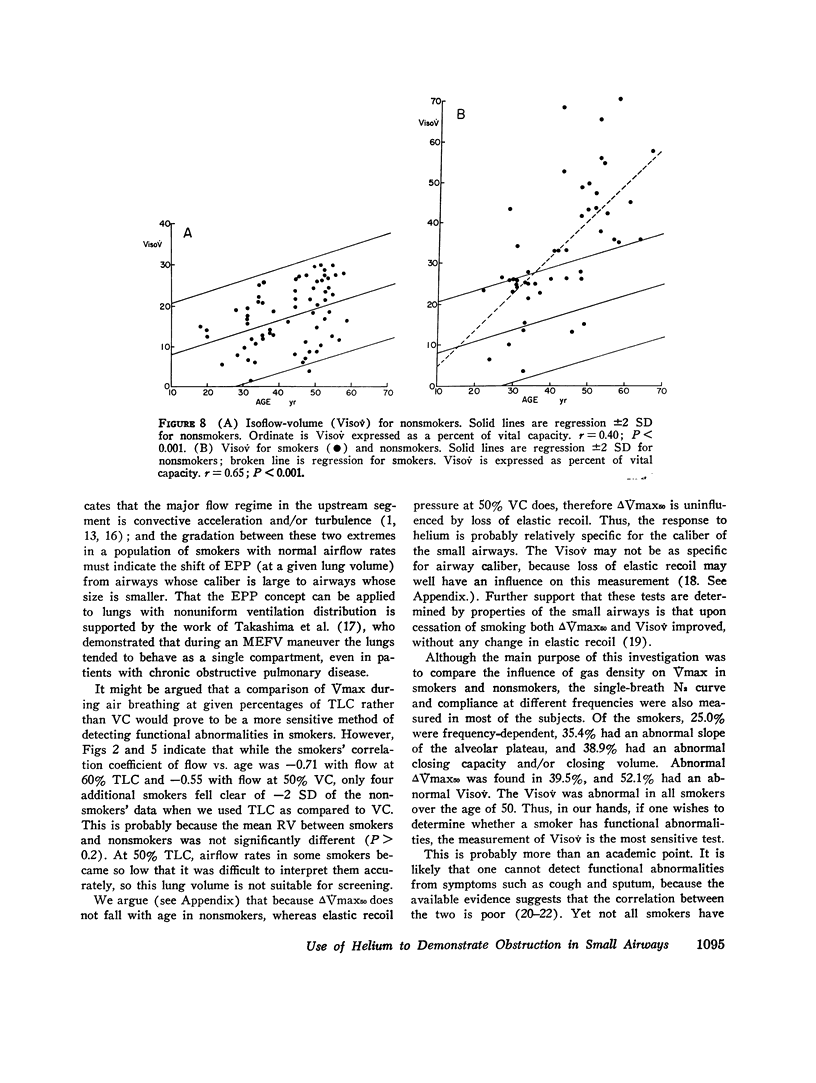
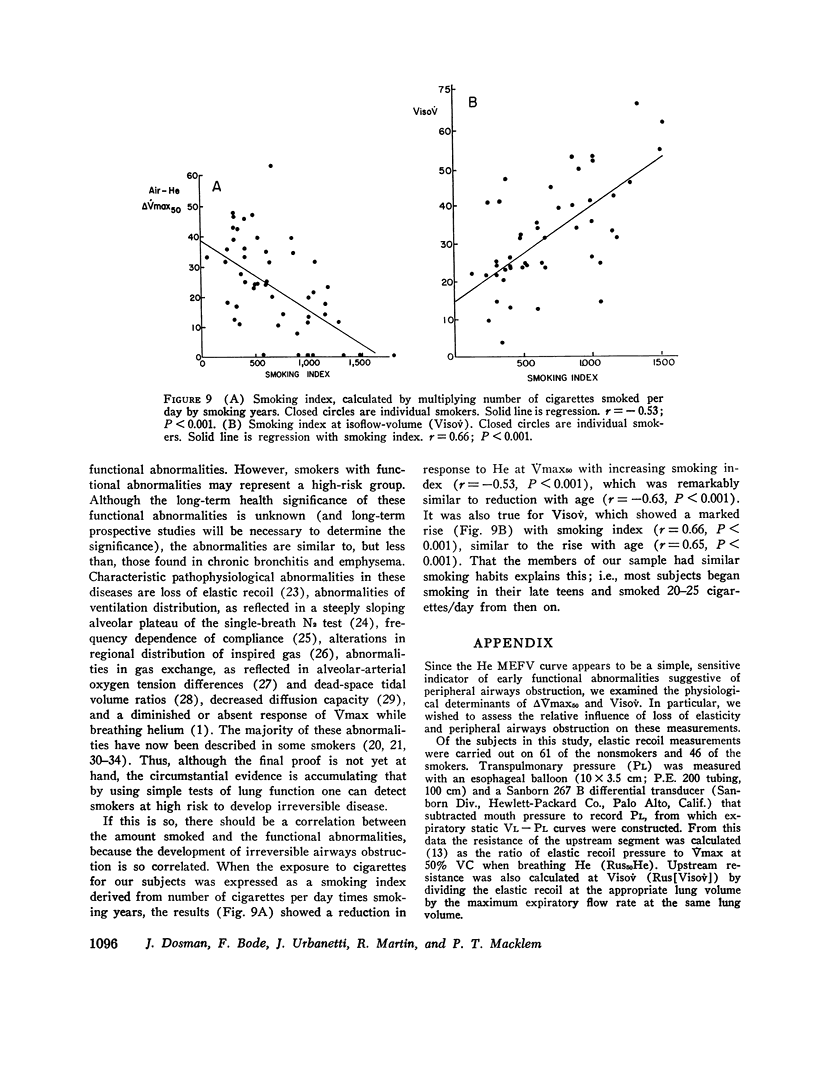
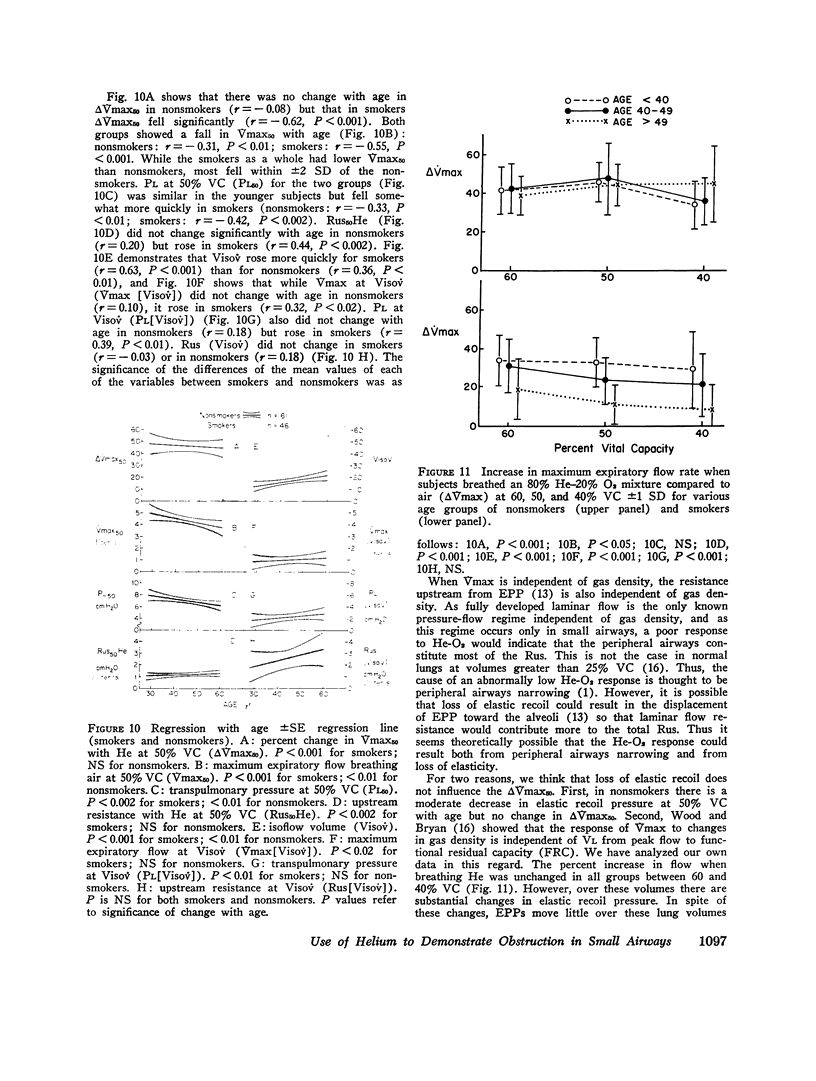
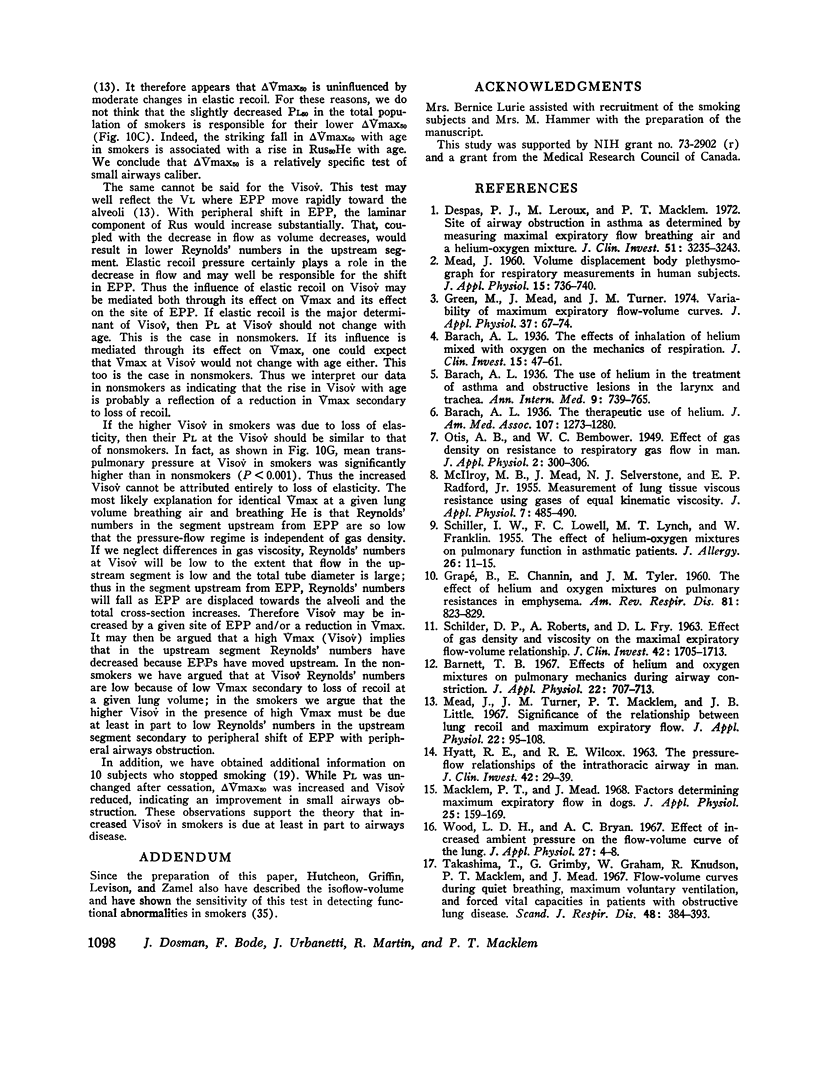
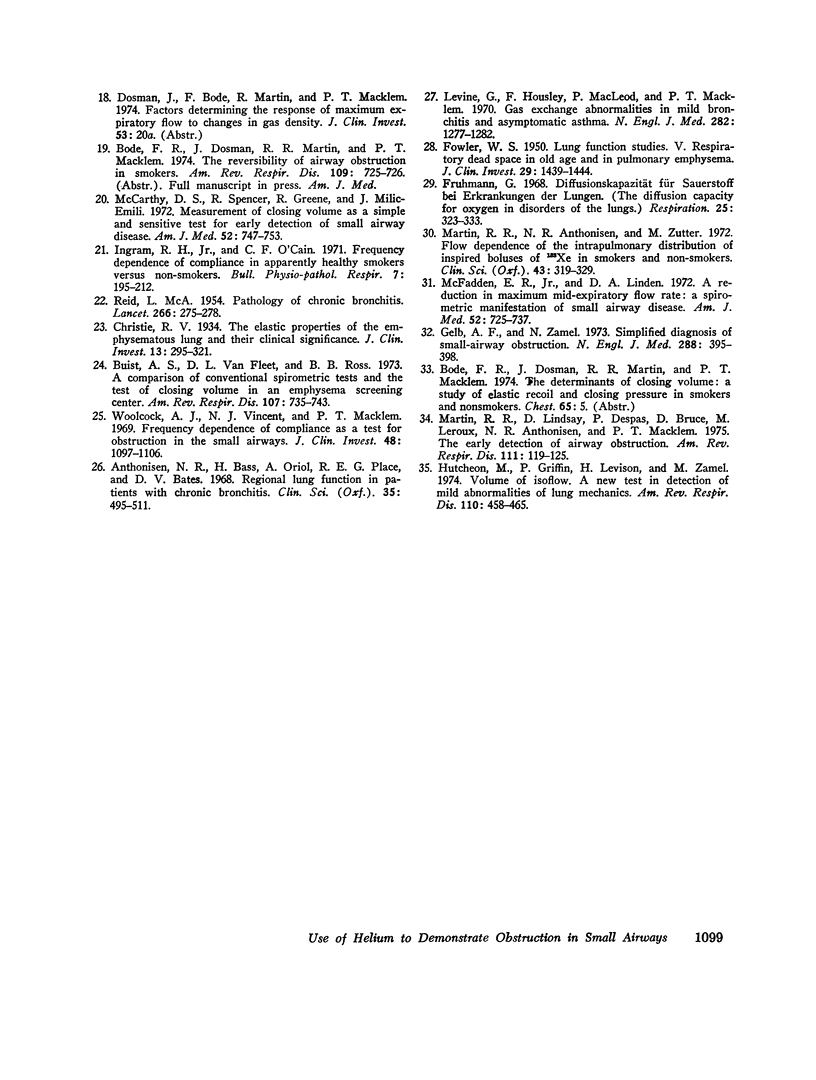
Images in this article
Selected References
These references are in PubMed. This may not be the complete list of references from this article.
- Anthonisen N. R., Bass H., Oriol A., Place R. E., Bates D. V. Regional lung function in patients with chronic bronchitis. Clin Sci. 1968 Dec;35(3):495–511. [PubMed] [Google Scholar]
- Barach A. L., Eckman M. THE EFFECTS OF INHALATION OF HELIUM MIXED WITH OXYGEN ON THE MECHANICS OF RESPIRATION. J Clin Invest. 1936 Jan;15(1):47–61. doi: 10.1172/JCI100758. [DOI] [PMC free article] [PubMed] [Google Scholar]
- Barnett T. B. Effects of helium and oxygen mixtures on pulmonary mechanics during airway constriction. J Appl Physiol. 1967 Apr;22(4):707–713. doi: 10.1152/jappl.1967.22.4.707. [DOI] [PubMed] [Google Scholar]
- Buist A. S., Van Fleet D. L., Ross B. B. A comparison of conventional spirometric tests and the test of closing volume in an emphysema screening center. Am Rev Respir Dis. 1973 May;107(5):735–743. doi: 10.1164/arrd.1973.107.5.735. [DOI] [PubMed] [Google Scholar]
- Christie R. V. THE ELASTIC PROPERTIES OF THE EMPHYSEMATOUS LUNG AND THEIR CLINICAL SIGNIFICANCE. J Clin Invest. 1934 Mar;13(2):295–321. doi: 10.1172/JCI100588. [DOI] [PMC free article] [PubMed] [Google Scholar]
- Despas P. J., Leroux M., Macklem P. T. Site of airway obstruction in asthma as determined by measuring maximal expiratory flow breathing air and a helium-oxygen mixture. J Clin Invest. 1972 Dec;51(12):3235–3243. doi: 10.1172/JCI107150. [DOI] [PMC free article] [PubMed] [Google Scholar]
- FOWLER W. S. Lung function studies. V. Respiratory dead space in old age and in pulmonary emphysema. J Clin Invest. 1950 Nov;29(11):1439–1444. doi: 10.1172/JCI102383. [DOI] [PMC free article] [PubMed] [Google Scholar]
- Fruhmann G. Diffusionskapazität für Sauerstoff bei Erkrankungen der Lungen. Respiration. 1968;25(4):323–333. doi: 10.1159/000192571. [DOI] [PubMed] [Google Scholar]
- GRAPE B., CHANNIN E., TYLER J. M. The effect of helium and oxygen mixtures on pulmonary resistances in emphysema. Am Rev Respir Dis. 1960 Jun;81:823–829. doi: 10.1164/arrd.1960.81.6.823. [DOI] [PubMed] [Google Scholar]
- Gelb A. F., Zamel N. Simplified diagnosis of small-airway obstruction. N Engl J Med. 1973 Feb 22;288(8):395–398. doi: 10.1056/NEJM197302222880805. [DOI] [PubMed] [Google Scholar]
- Green M., Mead J., Turner J. M. Variability of maximum expiratory flow-volume curves. J Appl Physiol. 1974 Jul;37(1):67–74. doi: 10.1152/jappl.1974.37.1.67. [DOI] [PubMed] [Google Scholar]
- HYATT R. E., WILCOX R. E. The pressure-flow relationships of the intrathoracic airway in man. J Clin Invest. 1963 Jan;42:29–39. doi: 10.1172/JCI104693. [DOI] [PMC free article] [PubMed] [Google Scholar]
- Hutcheon M., Griffin P., Levison H., Zamel N. Volume of isoflow. A new test in detection of mild abnormalities of lung mechanics. Am Rev Respir Dis. 1974 Oct;110(4):458–465. doi: 10.1164/arrd.1974.110.4.458. [DOI] [PubMed] [Google Scholar]
- Ingram R. H., Jr, O'Cain C. F. Frequency dependence of compliance in apparently healthy smokers versus non-smokers. Bull Physiopathol Respir (Nancy) 1971 Jan-Feb;7(1):195–212. [PubMed] [Google Scholar]
- Levine G., Housley E., MacLeod P., Macklem P. T. Gas exchange abnormalities in mild bronchitis and asymptomatic asthma. N Engl J Med. 1970 Jun 4;282(23):1277–1282. doi: 10.1056/NEJM197006042822301. [DOI] [PubMed] [Google Scholar]
- Macklem P. T., Mead J. Factors determining maximum expiratory flow in dogs. J Appl Physiol. 1968 Aug;25(2):159–169. doi: 10.1152/jappl.1968.25.2.159. [DOI] [PubMed] [Google Scholar]
- Martin R. R., Anthonisen N. R., Zutter M. Flow dependence of the intrapulmonary distribution of inspired boluses of 133 Xe in smokers and non-smokers. Clin Sci. 1972 Sep;43(3):319–329. doi: 10.1042/cs0430319. [DOI] [PubMed] [Google Scholar]
- Martin R. R., Lindsay D., Despas P., Bruce D., Leroux M., Anthonisen N. R., Macklem P. T. The early detection of airway obstruction. Am Rev Respir Dis. 1975 Feb;111(2):119–125. doi: 10.1164/arrd.1975.111.2.119. [DOI] [PubMed] [Google Scholar]
- McCarthy D. S., Spencer R., Greene R., Milic-Emili J. Measurement of "closing volume" as a simple and sensitive test for early detection of small airway disease. Am J Med. 1972 Jun;52(6):747–753. doi: 10.1016/0002-9343(72)90080-0. [DOI] [PubMed] [Google Scholar]
- McFadden E. R., Jr, Linden D. A. A reduction in maximum mid-expiratory flow rate. A spirographic manifestation of small airway disease. Am J Med. 1972 Jun;52(6):725–737. doi: 10.1016/0002-9343(72)90078-2. [DOI] [PubMed] [Google Scholar]
- McILROY M. B., MEAD J., SELVERSTONE N. J., RADFORD E. P. Measurement of lung tissue viscous resistance using gases of equal kinematic viscosity. J Appl Physiol. 1955 Mar;7(5):485–490. doi: 10.1152/jappl.1955.7.5.485. [DOI] [PubMed] [Google Scholar]
- Mead J., Turner J. M., Macklem P. T., Little J. B. Significance of the relationship between lung recoil and maximum expiratory flow. J Appl Physiol. 1967 Jan;22(1):95–108. doi: 10.1152/jappl.1967.22.1.95. [DOI] [PubMed] [Google Scholar]
- OTIS A. B., BEMBOWER W. C. Effect of gas density on resistance to respiratory gas flow in man. J Appl Physiol. 1949 Dec;2(6):300–306. doi: 10.1152/jappl.1949.2.6.300. [DOI] [PubMed] [Google Scholar]
- REID L. M. Pathology of chronic bronchitis. Lancet. 1954 Feb 6;266(6806):274–278. [PubMed] [Google Scholar]
- SCHILDER D. P., ROBERTS A., FRY D. L. EFFECT OF GAS DENSITY AND VISCOSITY ON THE MAXIMAL EXPIRATORY FLOW-VOLUME RELATIONSHIP. J Clin Invest. 1963 Nov;42:1705–1713. doi: 10.1172/JCI104856. [DOI] [PMC free article] [PubMed] [Google Scholar]
- SCHILLER I. W., LOWELL F. C., LYNCH M. T., FRANKLIN W. The effect of helium-oxygen mixtures on pulmonary function in asthmatic patients. J Allergy. 1955 Jan;26(1):11–15. doi: 10.1016/0021-8707(55)90103-9. [DOI] [PubMed] [Google Scholar]
- Takishima T., Grimby G., Graham W., Knudson R., Macklem P. T., Mead J. Flow-volume curves during quiet breathing, maximum voluntary ventilation, and forced vital capacities in patients with obstructive lung disease. Scand J Respir Dis. 1967;48(3):384–393. [PubMed] [Google Scholar]
- Wood L. D., Bryan A. C. Effect of increased ambient pressure on flow-volume curve of the lung. J Appl Physiol. 1969 Jul;27(1):4–8. doi: 10.1152/jappl.1969.27.1.4. [DOI] [PubMed] [Google Scholar]
- Woolcock A. J., Vincent N. J., Macklem P. T. Frequency dependence of compliance as a test for obstruction in the small airways. J Clin Invest. 1969 Jun;48(6):1097–1106. doi: 10.1172/JCI106066. [DOI] [PMC free article] [PubMed] [Google Scholar]



